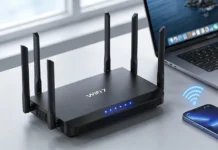Organizations with large employee bases may find human resources a challenge to manage. HR managers must balance resolving employee concerns and achieving organizational goals.
Technology can help HR strike this balance. By allowing technology to be incorporated into HR-related tasks, employees may focus on higher-level responsibilities and work more efficiently.
Organizations may benefit from technology by investing in IT tools and resources that increase employee productivity.
These tools can include cloud services for file management, mobility management services to connect multiple devices, and collaborative productivity tools to synchronize work.
In addition to investing in these resources, knowing about various technological trends may also help organizations adapt to emerging technologies and benefit their company.
How Technology Benefits People
Many years ago, simply having word-processing software on your computer might have been a more efficient way to write documents than a mechanical typewriter.
Nowadays, collaborating with other people to work on one document within the cloud may already be the norm.
In other words, what may have been practical tools before may be overtaken by better and more efficient methods in the future. This situation may also apply to businesses and organizations that rely heavily on human resources.
One of the opportunities technology offers to organizations is moving employees up from low-level tasks to more specialized positions. Machines can perform jobs that may be too routine or unsafe for humans.
Technological Trends for Human Resources
Internet of Things
The internet of things or IoT may provide applications in human resource management by making data more accessible throughout the enterprise. One example is through the use of cloud-based data-sharing solutions.
Although IoT technology is still fragmented and inefficient, further improvements within the next few years may allow IoT to integrate more seamlessly into the business.
One of IoT’s benefits is improving employee productivity. With the increased availability of data, HR can make more streamlined decisions, especially on employee training and development.
IoT may also allow HR to hand over training and development tasks to middle management through data sharing. This way, HR can focus on other tasks that are more aligned to the company’s goals, further improving efficiency.
Augmented or Virtual Reality
Virtual reality (VR) is a technology using a headset to access a virtual, fictional environment. Augmented reality (AR) utilizes a smartphone and its cameras to combine both virtual and real-world elements.
AR and VR technologies have been in existence for a few years. Still, their applications may go beyond the consumer market. Organizations may utilize both technologies for HR purposes such as onboarding and training.
For example, virtual instructions and manuals may be placed on specific instruments or equipment in labor-intensive industries. You may then access these instructions through VR headsets or AR-capable smartphones.
Machine Learning
Machines may be programmed to collect and analyze data, then make predictions from the information derived from that process. With computers capable of performing simple analysis, humans may be able to focus on more complex tasks.
One such area for machine learning is through recruitment and talent development. The platform may automatically provide a shortlist of potential candidates by analyzing employee information, patterns, and trends.
This capability allows HR managers to spend less time sifting through numerous applications and more time on higher-priority tasks like change management.
Wearable Smart Devices
Some of the popular wearable devices in the market these days are fitness trackers. These devices monitor different health aspects like heart rate, distance run, and calories burned.
Organizations keeping track of workplace health and wellness may consider such devices for their employees. Companies may use these wearables for stress management and employee productivity.
Examples of when wearables may influence employee productivity include timely notifications on shift schedules and alerts for customer-facing personnel to attend to immediate client needs.
At a strategic level, management may even use these devices for corporate policy making involving human resources.
Autonomous Robots
Similar to machine learning, robots may also learn and adjust to their environment.
One such example is the self-driving electric car that may navigate through a city without a human driver.
The car analyzes road signs, detects humans through cameras and sensors, and collects and stores those data. The vehicle then uses that data to navigate new roads and places.
In theory, those features may make an autonomous car safer than a human-driven one.
In HR management, autonomous machines may help analyze candidate applications. These machines may filter the successful ones based on the candidates’ credentials and learn new recruitment trends when new qualifications are detected.
Conclusion
Technology may help companies manage their operations more efficiently, and human resources are no exception. However, technology must also work for the organization’s goals to justify why the company used that technology in the first place.
Suppose the company invested in IoT and wearable smart devices to help improve HR efficiency but did not improve profitability. The management may need to reassess if those pieces of technology address the company’s goals.
Consult an IT expert or business consultant to know what IT tools and solutions may benefit you or your organization.




















